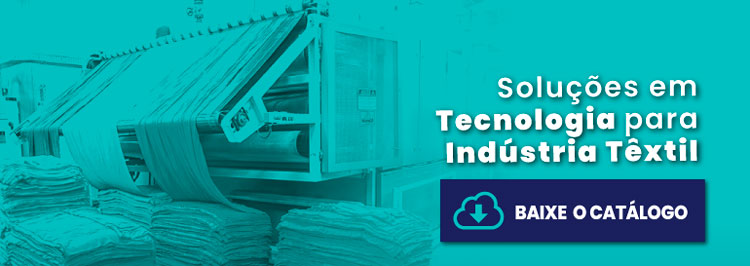An efficient production process is essential for manufacturing, after all, the more productivity, quality and agility it has, the more profit will be obtained. Many companies still suffer from some problems for which solutions already exist. In this article we list 5 of them and will indicate how to solve them. Continue reading and find out what they are!
1. Excessive rework in the production process
Rework tends to be a frequent problem that can have several causes, such as the use of low-quality fabrics, a process carried out with little precision, faulty equipment or even the lack of data to rely on concrete information for executing the process.
Purchasing modern equipment with greater durability and more advanced technologies can be a solution. You can check out our text about how technology can reduce rework in textile production.
2. Not mapping bottlenecks in the production process

Do you really know the bottlenecks that exist in the production process? Despite saying yes, many companies identify the results of bottlenecks, but do not map the process enough to find them.
It is necessary to survey the entire process and define performance indicators at each stage. Then, collect the data and analyze at which stages problems are occurring. Only in this way will it be possible to find actions to resolve them.
Related:
- How to evaluate and monitor production “breaks”? Where are my waste hidden?
- 3 machines to speed up and maintain quality in textile finishing
- How can technology reduce rework in textile production?
3. Using poor quality raw materials
If your company suffers from wasted materials and/or the production of second-quality parts, you may be purchasing low-quality raw materials. Seeking to save money, many clothing manufacturers look for the lowest price for raw materials.
The problem occurs when, at the time of wrapping, it is noticed that the fabrics are stained, torn or faded. This generates unnecessary rework and costs, making the famous popular saying “cheap is expensive” become a reality present in everyday life.
There are ways to identify, when receiving inputs, whether they have problems or not. The Knitwear Reviewer inspects all the necessary characteristics, allowing you to return the defective fabric and preventing it from causing damage in the future..
4. Non-standard procedures

Does your production process follow standardization? The demand for higher quality parts is constant for customers and, on the other hand, the industry also needs to maintain its profit margins to survive. Standardization of processes is the best alternative to satisfy the needs of both.
Survey the entire process and optimize it as much as possible. Then, implement the changes that are necessary, always monitoring the results and the application of standardization.
When you always carry out the same process in the same way, you can have greater predictability in costs and profits, even managing to scale production without losing quality.
5. Lack of investment in technology in the production process
When was the last time you looked for technological news in your area? When was the last time you replaced an old piece of equipment with a more modern and efficient one?
Technological advances have provided a series of benefits over the years and the textile industry is no different. Carrying out fabric tests in domestic washers and only carrying out manual inspections on fabrics, for example, are outdated practices. Relaxing tissues for hours is also something that is no longer necessary.
Equipment such as the sample washer can perform tests with a small piece of tissue and takes a maximum of 20 minutes. The mesh reviewer collects all the data you need quickly, without human error, and generates automated mapping that can be used to perform quality control.
The mesh relaxer takes 5 to 10 minutes to complete the process, is dimensional stable and collects real information from the fabrics. There is no way to simply keep manufacturing stagnant and let competitors use more efficient methods while your company falls behind.
Get to know Industry 4.0 and understand how it can benefit your production process, including solving the problems mentioned above. Make them stay in the past and generate more results.
And if you want to follow the market and want to invest in new technologies, find out now how to introduce your internal team to new technologies and industrial equipment!


![production process - E-book]How to guarantee quality control in the textile industry?](https://deltamaquinastexteis.com.br/wp-content/uploads/2019/04/ebook-como-garantir-o-controle-de-qualidade-na-industria-textil.jpg)
